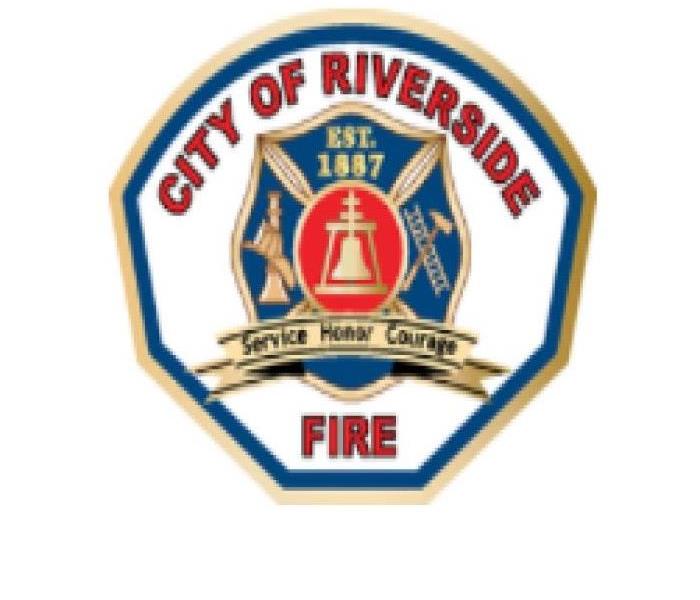City of Riverside Disaster Preparedness
5/31/2021 (Permalink)
 The City of Riverside is actively coordinating the City's response to disasters & assisting residents to prepare major events.
The City of Riverside is actively coordinating the City's response to disasters & assisting residents to prepare major events.
If you are a Riverside resident, we captured some important questions and links to understand how the City of Riverside is managing emergency disaster preparedness. See below for important pieces of information. Be prepared! Click links below for more information.
Emergency Management Disaster Preparedness
The City of Riverside's Emergency Management Office is actively coordinating the City's response to disasters as well as assisting residents to prepare for major events such as earthquakes, floods, hazardous material spills, plane crashes, train derailments, Africanized honey bees, and civil unrest.
Frequently Asked Questions
The Emergency Operation Center (EOC) is a secure facility where City department heads are able to work in the event of a large disaster. The facility provides centralization of City response to major events. The EOC allows for City departments to work closely together to make recovery more efficient for the community.
Does the City have a disaster plan?
Yes. The City is required by state and federal regulation to have a response and recovery plan. This plan covers everything from earthquakes and plane crashes to fires and flooding. This plan is maintained by the Emergency Manager and is continuously updated. A major update of the plan is done every five years. The newly revised plan is available to view at Riverside Public Library, Reference Section.
What is disaster preparedness?
Disaster preparedness is the means of preparing for a disaster before it happens. Some ways of preparing would be storage of food, water, and medicine in the event you had to be on your own for three days, planning escape routes, and setting up out of area contacts. These are just a few of the things you can do.
What types of disasters occur in the Riverside area?
Riverside is most vulnerable to floods. However, we can have earthquakes, draughts, fires, winds, Africanized honey bees, fire ants and situations such as civil unrest, terrorism and energy shortages.
Where are the nearest bomb and fallout shelters?
Bomb and fallout shelters were the direct result of a fear of nuclear war in the 1950's and 60's. With the decline of the Cold War the need for these shelters has disappeared. The City has developed extensive emergency plans and resources to ensure a coordinated response to any disaster, including a terrorist event. The best thing to do is listen to the radio or television for any information such as the location of any shelter - if established, or the need to 'shelter-in-place.
What do you mean by 'shelter-in-place'?
Shelter-in-place is intended to keep you safe while remaining indoors. For other natural disaster you may be directed by local officials to go to a community shelter for safety purposes. However, the intent of a 'shelter-in-place? means selecting a small, interior room, with no or few windows and taking refuge there.
An above ground location is preferable because some chemicals are heavier than air, and may seep into basements even if the windows are closed. Large storage closets, utility rooms, pantries, copy and conference rooms without exterior windows work well. Use duct tape and plastic sheeting (heavier than food wrap) to seal all cracks around the door and any vents into the room. There is no need to seal off your entire home or office with duct tape and plastic sheeting.
It is important to remember that instructions to 'shelter-in-place? mean shelter for a few hours, not days or weeks. There is little danger that the room in which you are taking shelter will run out of oxygen and you will suffocate. Keep listening to your radio or television until you are told all is safe.
Biological and radiological agents, which are airborne, are vapors, not gasses so there's no need for a gas mask. Vapors immediately begin to dissipate once they are released. When you leave an area, the risk of being affected by a vapor diminishes. Gas masks were developed for soldiers who have to remain in a specific area - that's the big difference. You can leave an area and always leave the risk. Chemical gasses need to be delivered in large quantities in order to kill or cause injuries. If you smell a vapor or gas, remember to stay calm. If you panic you have a tendency to breathe faster and you will breathe more of the biological, radiological or chemical agent. Listen to local radio and television broadcasts for information if an airborne attack occurs.
Should I start storing food, water, medical supplies, clothing, etc.?
It makes good sense to store food, water and medical supplies as well as duct tape and plastic sheeting. Natural disasters can occur at any time, and the City encourages you to do all you can to be prepared for all types of hazards. Why not be ready?
What is the City of Riverside doing about terrorist attacks?
The City is involved in a multi-jurisdictional group whose responsibilities are to develop terrorism emergency response plans and training. The Police Department continually assesses threats to determine if they are credible. The City has been very pro-active in its terrorist response planning.
For Further Information Call:
City of Riverside Office of Emergency Management - (951) 320-8100






 24/7 Emergency Service
24/7 Emergency Service